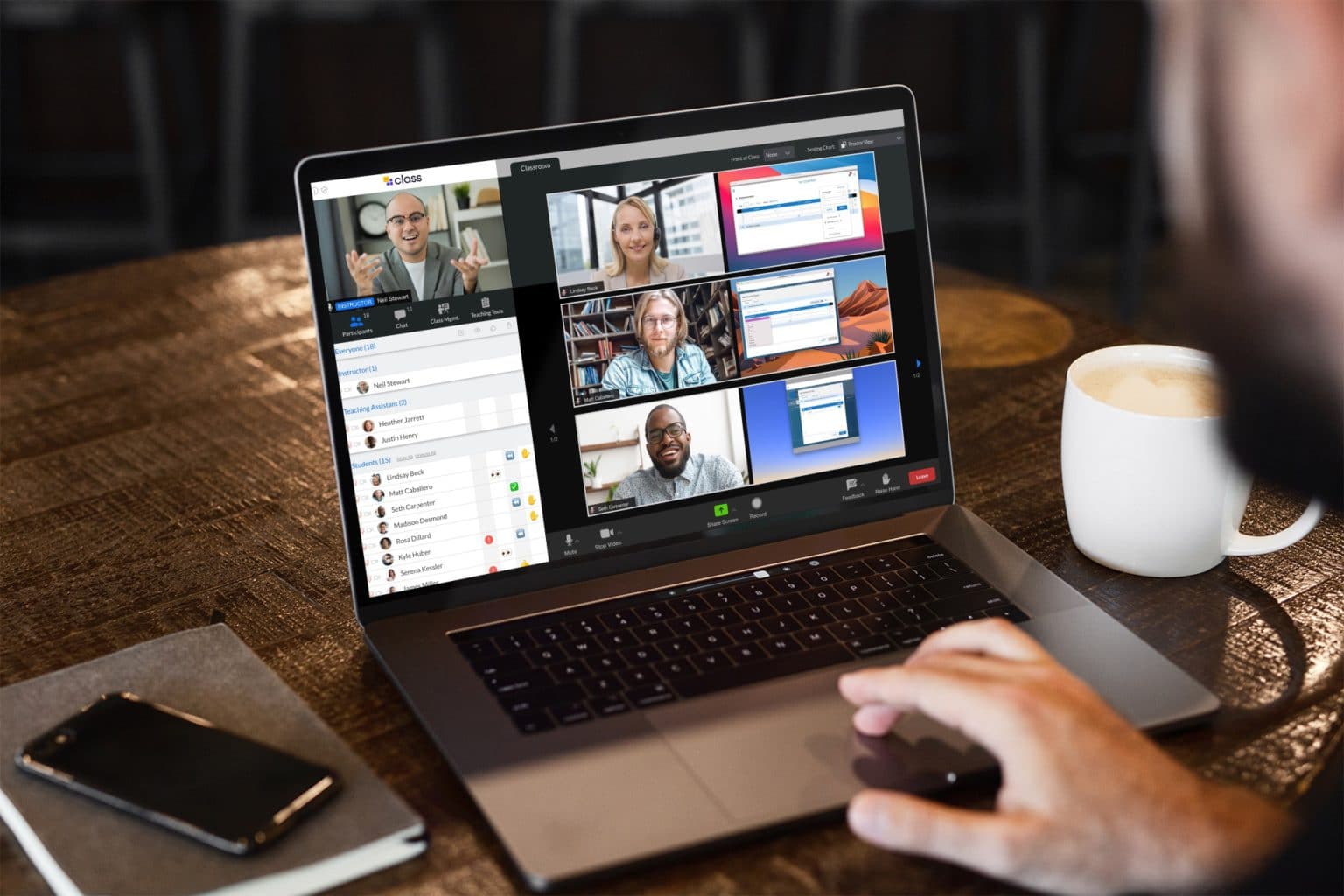
Class is the next generation virtual classroom for K-12, higher education, government agencies, and the workplace. Contact us today to schedule your live demo and see Class in action.

Class is the next generation virtual classroom for K-12, higher education, government agencies, and the workplace. Contact us today to schedule your live demo and see Class in action.

The hybrid work environment is not so new anymore. Supervisors, managers, and employees have now had well over a year of experience with working and managing a hybrid workforce where some employees may be onsite and others are working from home.
There have been some hard—and important—lessons learned over the past several months. Productivity, of course, has been a top-of-mind concern. Companies, managers and HR departments have been pleasantly surprised to learn employees can and have been as, if not more, productive working from home than when working out of traditional settings. They have also learned some best practices for helping to maintain high productivity and ensuring that the hybrid workforce is successful.
Hear business experts and managers share some of the best practices they have discovered during the pandemic for making the hybrid working environment as effective as possible.
Rob Cross is a global leadership professor at Babson College, co-founder and research director of the Connected Commons business consortium, and author of BEYOND COLLABORATION OVERLOAD: How to Work Smarter, Get Ahead, and Restore Your Well-Being (Harvard Business Review Press; September 14, 2021). Cross argues that the biggest thing we need to consider as we head back to the office and more in-person work is how we can be more intentional about the time we are spending working with each other.
Tools help, but Cross notes that technology is just a piece of the process of managing a hybrid workforce. Managers need to look more closely at the overall organizational structure to ensure that employees are collaborating effectively and efficiently in a hybrid workplace.
Cross points to a study conducted by the Connected Commons, which looked at 300 organizations over 20 years. The study showed that collaboration today is not just dysfunctional, but crippling. Managers need to be intentional about how they interact with employees, wherever they may be located—and how they help employees stay connected with each other.
A hybrid work environment should not be run on separate paths—one for those on-site and one for those working from home. Instead, managers need to consider ways to connect all employees, no matter where they work.
Technology is one of the first tools that come to mind when thinking about managing in a hybrid working environment. There are a wide range of technology tools that have allowed organizations to be as productive as possible during the pandemic. In fact, it is likely true that without the technology we have had available to us many companies would not have been able to thrive—or even survive—with a hybrid workplace.
Sam Dolbel, co-founder and CEO of SINC Workforce, says: “For most businesses in a hybrid model, a collaboration tool is a handy tool. It allows employees to easily communicate, share files and operate efficiently with their colleagues despite the distance.” His company also uses tools to “help manage remote employees, assign tasks and streamline communication,” he says. “What’s good about employment software is that it bridges the gap between the office and those who are working remotely,” Dolbel says. “Employees can quickly raise issues and receive responses from their supervisors in real-time.”
Technology is definitely a boon for improved communication, agrees Dorian Stone, general manager of Grammarly Business. “Customers have vastly different needs and engage in vastly different behaviors than they did a year ago,” Stone says. “Overall, they hold companies to a much higher bar as more communications happen in written form and over digital channels, making it harder than ever to engage customers and win over their loyalty. Effective communication is table stakes for organizations to overcome these challenges and reach their business objectives.”
“The solutions most suited for remote work are technologies that make it easier for teams to communicate and collaborate efficiently and on-brand while integrating seamlessly into existing processes and systems,” Dolbel says. “These types of tools help organizations ensure consistency and engagement across dispersed teams and ultimately facilitate better customer experiences.”
Both real-time and anytime engagement is critical in a hybrid workplace, especially as employees may be working across time zones—and often also in different time zones than their customers, clients, vendors and other key audiences.

“When it comes to the hybrid workforce, collaboration is key,” says Reggie Yativ, COO of Agora. “Coworkers need to be able to engage with one another in real-time, without connectivity issues or threats of security issues.” Technological advances make that possible, Yativ says. “Through recent technological developments, employees can collaborate seamlessly, from any device, without requiring a VR headset.”
Remote collaboration can readily occur in ways that closely approximate in-person interactions through devices ranging from laptops to phones. “This can be particularly helpful when training new hires as they can get a truly hands-on experience for what the job entails and, ultimately, reduce the adjustment period for new employees,” Yativ notes.
While tools like Zoom have provided large benefits during the pandemic, effective use by your hybrid workforce shouldn’t be taken for granted.
Not using tools like Zoom effectively, says Christianne Klein, a former TV journalist with ABC News, Good Morning America and the founder of Truth Fairy, Inc., a consulting firm that trains CEOs and others on how to work most effectively with their teams in hybrid environments, can impact credibility. Proper training can ease some of the anxiety people have about connecting via technology and impact performance, Klein says.
“If you don’t understand how to use the medium, if your team doesn’t feel comfortable on-camera or in their space, if you don’t adjust your body language, if the other party can’t see your eyes or if your camera angles are incorrect—where, psychologically, people will think you’re talking down to them, or won’t trust you—your business will suffer,” Klein says. “Once businesses and teams understand the medium and make appropriate changes, they can actually save money in travel, their employees feel and act confident, and in some cases, they can be even more effective.”
The work world is different today– and the differences are likely to continue as companies of all kinds learn how to most effectively navigate a hybrid work environment. Technology and a constant focus on communication will be paramount for HR leaders and managers as they create a hybrid workforce strategy that will work best for their organizations and employees.

Class is the next generation virtual classroom for K-12, higher education, government agencies, and the workplace. Contact us today to schedule your live demo and see Class in action.

Class is the next generation virtual classroom for K-12, higher education, government agencies, and the workplace. Contact us today to schedule your live demo and see Class in action.
Get our insights, tips, and best practices delivered to your inbox

Sign up for a product demo today to learn how Class’s virtual classroom powers digital transformation at your organization.

Features
Products
Integrations